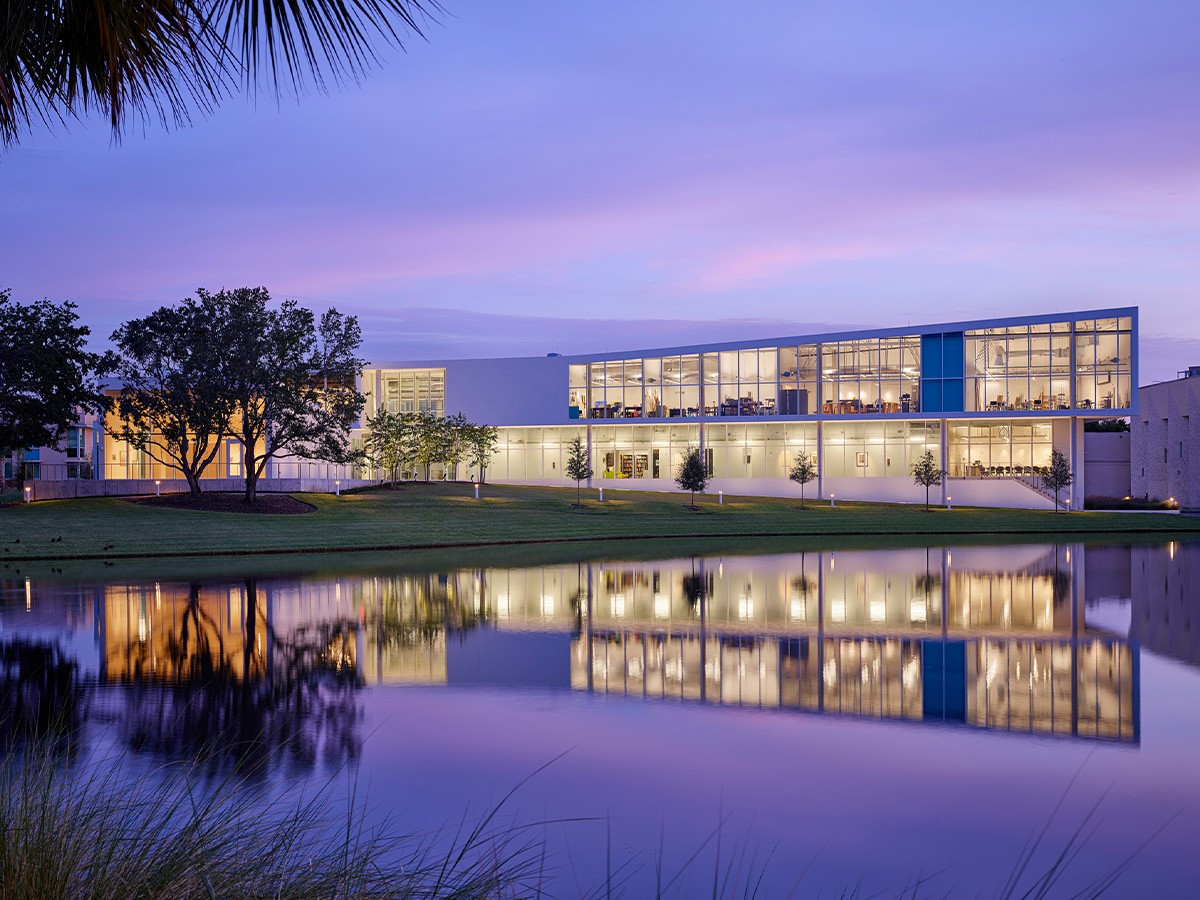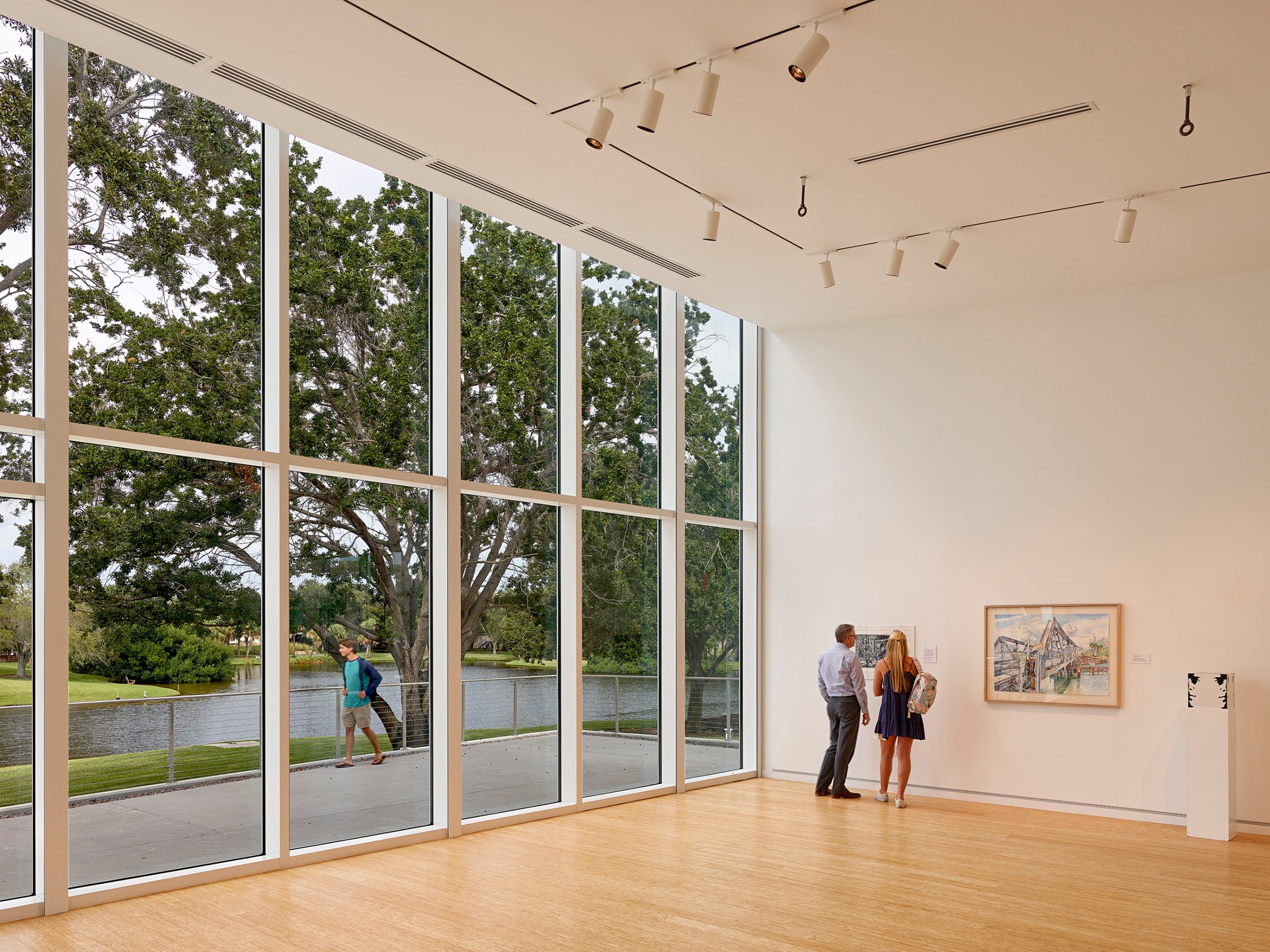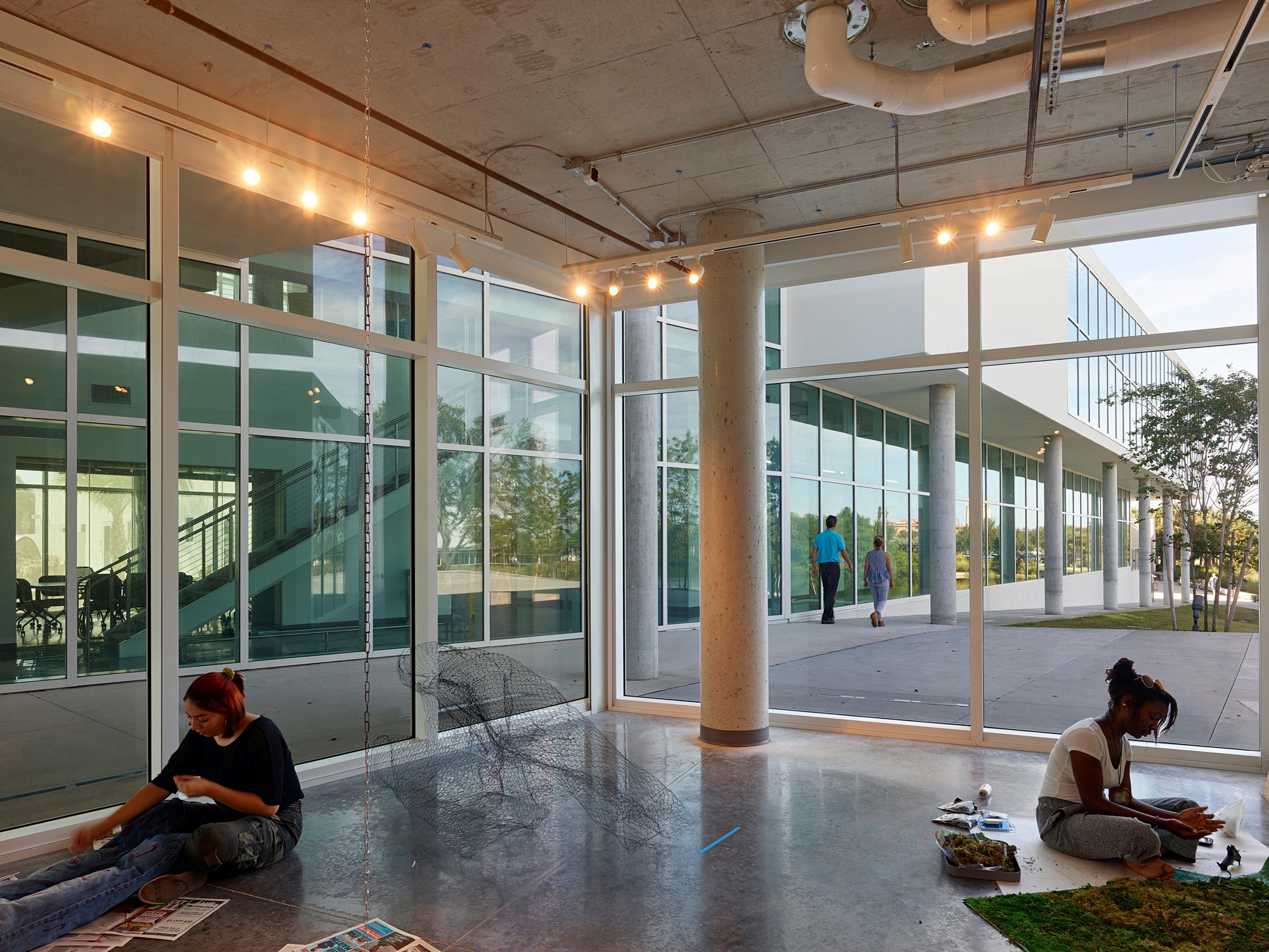This site uses cookies – More Information.
Helmar and Enole Nielsen Center for Visual Arts

Featuring incredible views and carefully planned siting, the Helmar and Enole Nielsen Center for Visual Arts is a prime example of architecture supporting the activity of the building. Students and faculty thrive in the inspiring environment created by extensive daylighting, connections to nature, and a sense of place and belonging.
Organized into three distinctive but interconnected pieces, the building contains faculty spaces, studios for two-dimensional art and galleries, and makerspaces for three-dimensional fabrication. The deflective building form and its movement is inspired by the local flora and fauna. Local requirements and site analysis presented unique design opportunities to truly integrate the building into the landscape and campus context.

While creating an east-west axis to connect with other buildings in the vicinity, the Center for Visual Arts is carefully nestled into the site. The building’s shape and large expanses of glass maximize views to the adjacent pond and provide inspiring views inside and out. Connections to the landscape create a strong sense of place.


Changes in elevation on the site created interesting design opportunities, while also fulfilling the practical needs of floodplain requirements and service access. This organization aligns with specific HVAC needs and establishes a village-like pattern on the site. Patios and indoor/outdoor spaces are made more evocative by elevation changes.


The stucco building recalls others on the Eckerd campus, while presenting a modern form appropriate for a 21st century art school. Glazed facades and a sawtooth design on the southern axis ensure daylighting in all portions of the building. Designed to capture as much northern light as possible, the building provides an ideal environment for the creation, preservation, and display of art.


The building houses traditional arts programs including painting, drawing, printmaking, and sculpture, as well as digital art, photography, graphic design, and sound design. The design of the building enhances interdisciplinary artmaking and teaching as a shared experience. Studio spaces for faculty and students create opportunities for increased interaction. Students benefit from seeing their instructors work as artists.


